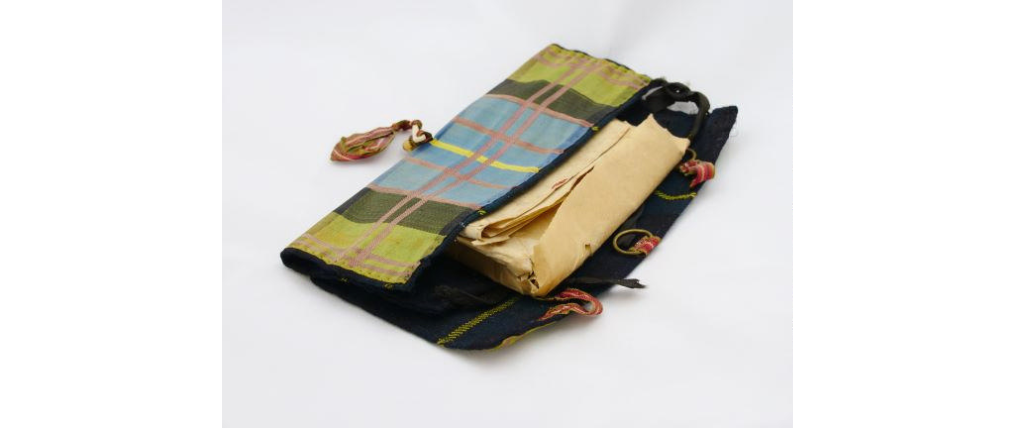This week sees the opening of the V&A Dundee’s new and iconic Tartan exhibition on Saturday 1st April. This is the first major exhibition curated by V&A Dundee, with Jonathan Faiers of the University of Southampton, and celebrates their 5th anniversary. West Highland Museum are delighted to have five of our precious objects on loan to the V&A for this special exhibition which lasts until January 2024.
The first object on loan to the V&A is our hard tartan cloak made in Uist and is from the collection of the Victorian folklorist, Alexander Carmichael. It is labelled made in the 18th century. Research is ongoing to establish whether this is actually a 19th century cloak or a old tartan, upcycled to 19th fashion.
.jpg)
The second item on loan is a hussif, or good luck charm made for Colonel John Cameron of Fassiefern (1771 – 1815). It is made from tartan silk and contains a pebble, pieces of stalk, speedwell seeds sewn in, with a tiny padlock and a letter. The letter reads “Col. Cameron, 92 Regt. Foot. Sir: I am all gratitude for your former kindness. When I heard the regt. was leaving town I was more troubled than I can express. I am ever bound to pray for your welfare, as a token of my gratitude I send a small bag, if you should chance to go to battle, or an (..) of honour, it will be no great trouble to put it round your neck. I trust it will save you from your enemy, which is the wish of – your humble servant, Unity Mathews”. It was gifted by Unity Mathews to the Colonel. It didn’t bring him much luck though. He was killed at Quatre Bras in June 1815 the day before the Battle of Waterloo.

The third item on loan is a fragment of tartan in glazed frame, corners decorated with silver engraved with thistles. from Prince Charles Edward’s plaid. Part of Hepburn Bequest Loaned 2003/4 to Museo del Tessuto, Prato, Italy, and the fourth object is a piece of tartan believed to have been from a kilt worn by Prince Charles Edward Stuart. With paper reading “fragment of kilt worn by Prince Charlie once in possession of Walker Armstrong Esq, of Tarff House, Kirkgowan. The kilt of which this formed part was long in the possession of a family on the island of Taransay, Harris. There is another fragment at Stonyhurst College. Both were examined c.1987 by Peter Macdonald, handloom weaver, with a view to reconstruction. During the research for the V&A exhibition another piece of this rare tartan was identified at another museum in Scotland. All the pieces will be reunited in the V&A exhibition..jpg)
The final object on display at the V&A Tartan exhibition is a hard tartan box pleated Stuart kilt in the Duke of Rothesay tartan and is said to have been worn by the Sobieski brothers. The tartan is their own design. It is unusual as it is a very early example of a sewn box pleated kilt and it is the earlies example of this pattern which first made its appearance in 1842. The Sobieski brothers modelled themselves as scholars of Highland dress, weaponry and Gaelic culture. They claimed to be the grandchildren of Prince Charles Edward Stuart. From the 1820s the Sobieski – Stuart brothers were responsible for many of the tartans now accepted as being the “old and true tartans” of many clans. John Sobieski Stolberg Stuart and his brother Charles Edward Stuart claimed to be the legitimate grandsons of King Charles III (Bonnie Prince Charlie). They claimed that Queen Louise and Charles had a son who was handed over to the captain of an English warship to protect him from assassination attempts. The Sobieski brothers claimed to be sons of this child. They fooled many in society. In reality, the Sobieski – Stuarts were born in Wales to English parents as John Carter Allen (1795–1872) and Charles Manning Allen (1802–1880). From 1847 they lost favour after their reputations were damaged by the press.
The Tartan exhibition is at V&A Dundee from Saturday 1st April 2023 – Sunday 14th January 2024
